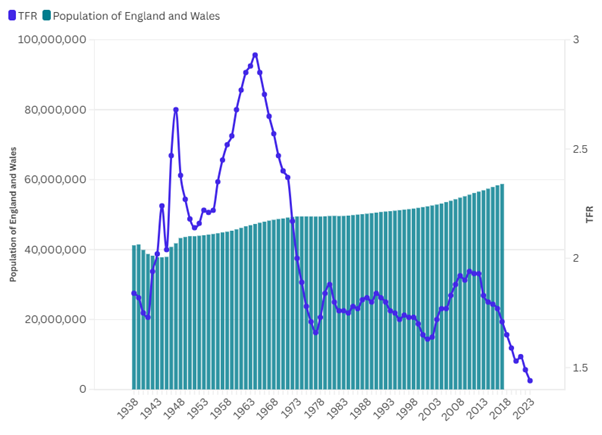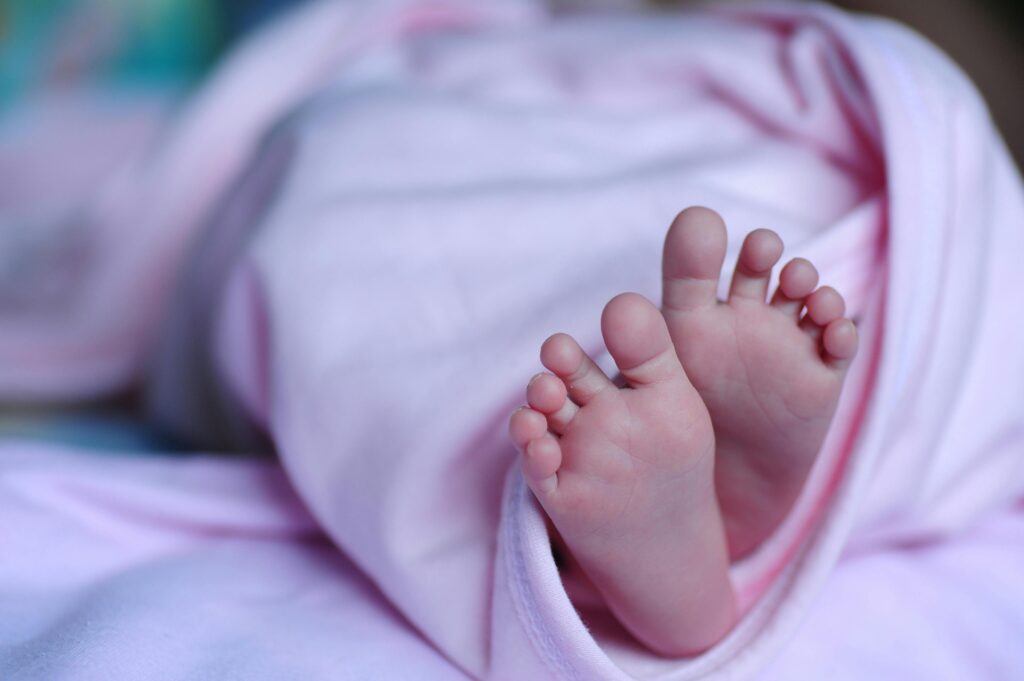The total fertility rate in England and Wales has dropped to 1.44, its lowest figure since records began in 1938, data from the Office for National Statistics shows. The total fertility rate, which measures the average number of children a woman expects to have in her lifetime, has been on an overall steady decline since 1938.
The current rate is significantly below an average of 2.08, a figure that the ONS describes as necessary for the “long-term ‘natural’ replacement of the population.” The TFR has declined every year since 2010 and has not been above 2 since 1973.

Despite the decline, the number of women of childbearing age is 11.9 million, the highest it has ever been. A recent study by Dr. Alina Pelikh and Professor Alice Goisis at University College London into the reasons for the low TFR amongst 32-year-olds found that only one in four respondents who want children were actively trying to have children.
https://discovery.ucl.ac.uk/id/eprint/10198568/1/Fertility-intentions-and-postponed-parenthood_Initial-findings-from-Next-Steps-at-Age-32.pdf
Amongst this group, financial concerns, not having a suitable partner, a partner’s work or study commitments, and having an unwilling partner were the primary reasons for respondents either delaying parenthood or not wanting to have additional children.
Resolutions to this problem differ between both sides of the political spectrum. Sir Keir Starmer, during a trip to Washington, D.C., in September, suggested that he will not tell people how many children to have, despite the falling birth rate, stating that “there are other ways of growing the economy.”
“So I think growing the economy can be solved by local growth plans, by stabilising the economy and all the measures we’ve already set out – but I’m not going to lead a, sort of, birth plan.”
The decline in birth rate could lead to economic stagnation for the UK, according to a think tank study conducted by the Social Market Foundation in 2021.
https://www.smf.co.uk/baby-shortage-could-spell-economic-stagnation-for-uk/
Former Tory MP Miriam Cates told The Daily Telegraph: “It’s very concerning that the Prime Minister doesn’t appear to understand the basic mathematical problem underpinning the UK’s sluggish growth; namely, that falling birth rates mean we have fewer and fewer working people supporting growing numbers of pensioners.”
https://www.telegraph.co.uk/politics/2024/09/15/starmer-refusal-children-falling-birth-rate/
This problem is not unique to the UK, with birth rates falling rapidly in many parts of the developed world. South Korea, a nation that at the end of its war in 1953 had a TFR so high that the government brought in policies to lower it, has spent more than 200 billion in areas such as childcare subsidies since 2006.
Meanwhile, in Japan, the government has offered lump-sum payments to women who have babies and has offered to cover the cost of fertility treatments.
In Hungary, the Prime Minister, Viktor Orbán, is spending 5% of government GDP on pro-natalist policies. Yet Hungarian women are still having, on average, 1.5 children.
Birth-rate statistics differ greatly in the developing world, most notably in Africa. The 20 countries with the highest birth rates are all countries that would be considered ‘developing.’ Nineteen of these countries are in Africa.

